Wake Window Travel Tips in 2025: Best Way to Keep Your Baby Sleep While Traveling
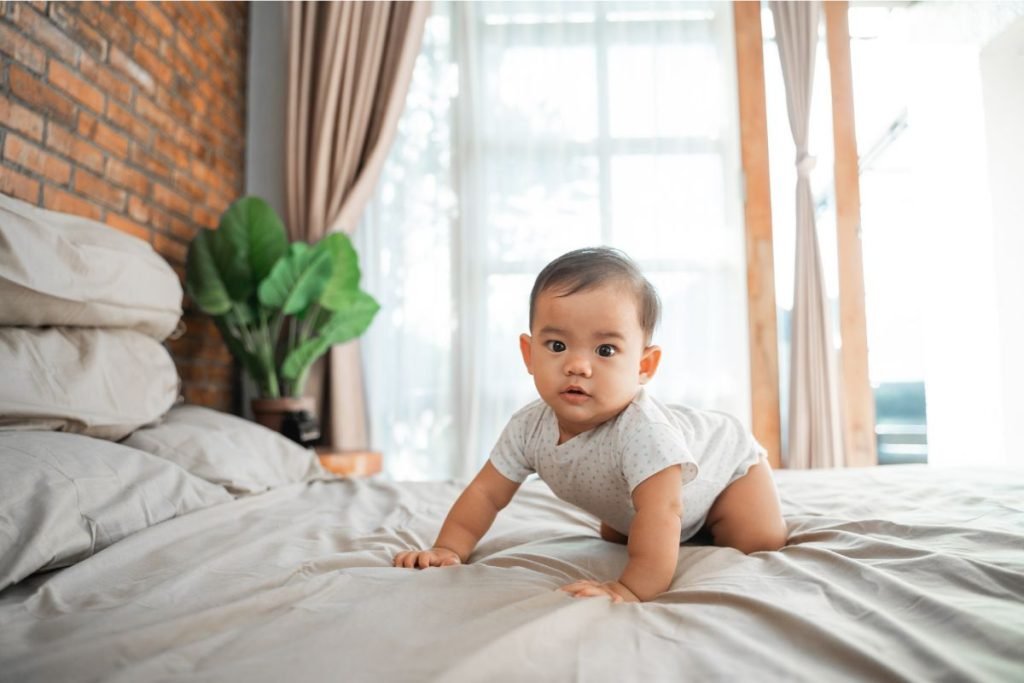
Struggling to maintain your baby’s wake windows and sleep schedule while traveling? With the right wake window travel tips, you can set your little one up for success.
In this post, you’ll learn how timing naps and bedtime, sticking to routines, and creating a restful on-the-go sleep environment can make travel with your baby smoother.
Discover the best ways to keep your baby’s sleep schedule intact while traveling and ensure your child is well-rested and happy. Follow these proven tips to minimize fussiness and enjoy your travels together.
Key Takeaways:
- Preparation Matters: Start with a well-rested baby and carefully plan accommodations.
- Time Zone Tricks: Gradually adjust to new time zones to ease your baby’s transition.
- Maintain Routines: Stick to bedtime rituals and sleep cues for consistency.
- Expert Insights: Benefit from expert advice and valuable resources.
- Gear Recommendations: Pack essential gear for comfortable and familiar sleep spaces.
- Air Travel Sleep Tips: Ensure a cozy environment for sleep during flights.
Preparing for Travel
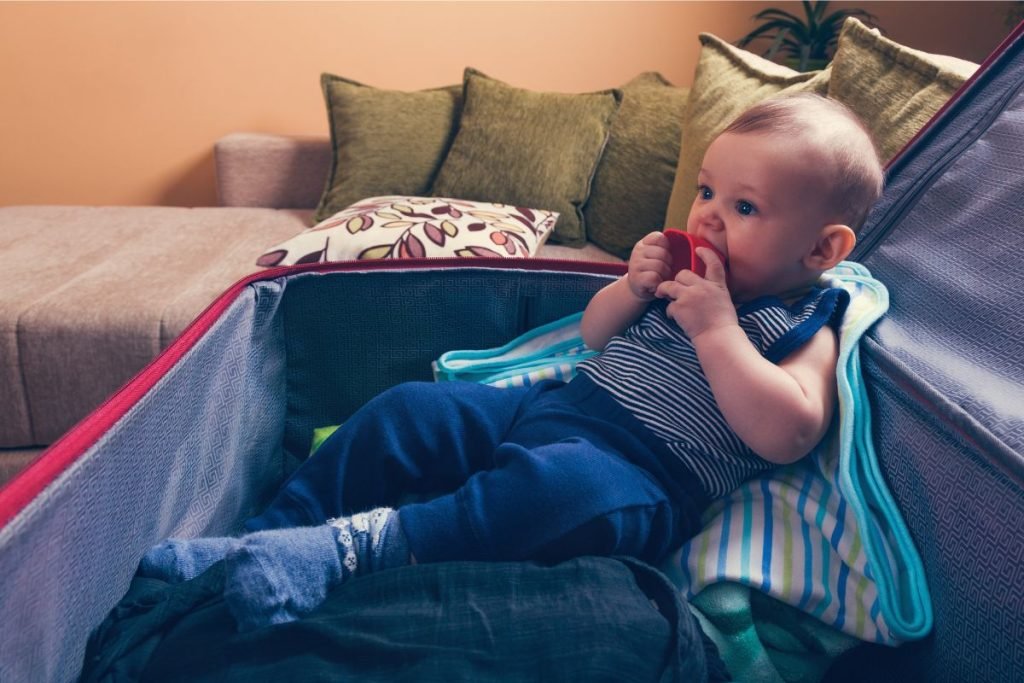
Get back on track with a Well-Rested Baby
Preparing for a trip with a well-rested baby can make the journey smoother. It’s important to ensure that your little one gets a good night’s sleep before you start your journey, whether it’s by car or plane.
When your baby is well-rested, they tend to be more adaptable and resilient to the changes that come with travel. So, make sure your little one is well-rested before hitting the road or taking to the skies.
Plan Accommodations Carefully
Selecting the right accommodations is key to maintaining your baby’s sleep habits. Look for family-friendly options, and consider the sleeping arrangements. A crib or a pack ‘n-play can provide a familiar sleep space for your baby, promoting a sense of comfort in a new environment.
Pack the Essentials to Recreate the Baby’s Sleep Space
Recreating the comforts of home in your travel space is essential. Pack familiar items such as your baby’s favorite blanket, sleep sack, or stuffed toy. These familiar scents and textures can help soothe your little one, making bedtime away from home more reassuring.
Maintain Your Bedtime Routine While Away
Consistency is key, even on the road. Stick to your baby’s bedtime routine as closely as possible. Whether reading a bedtime story, singing a lullaby, or a warm bath, these familiar rituals signal your baby that it’s time to wind down, regardless of the location.
Try to Get Back on Track with One Good Nap a Day
Incorporating quality nap time into your travel schedule is crucial for your baby’s overall well-being. Ensure your little one gets sufficient daytime sleep, even if it means adjusting your plans. A well-rested baby is more likely to adapt to the changes in routine during travel.
Managing Time Zone Changes

Our Travel Includes a Time Change, How Do We Help Our Baby or Toddler Adjust to a New Time Zone?
Traversing time zones can throw off your baby’s internal clock, but fret not; we’ve got you covered. To help your baby smoothly adjust to a new time zone, gradually shift their sleep schedule in alignment with the destination time. Exposure to natural daylight at the local time can aid in resetting their internal clock. For instance, if traveling east to west, expose your baby to evening sunlight, while morning sunlight is beneficial when traveling eastward.
Back on track: Help! My Baby Won’t Sleep on Vacation, What Should I Do?
Sleep disruptions during vacations are not uncommon, and troubleshooting is key. Start by recreating a sleep-conducive environment. Familiar items, such as your baby’s favorite sleep sack or a portable white noise machine, can provide comfort. Stick to bedtime routines as much as possible, and ensure the sleep space is conducive to rest. Sometimes, a small adjustment in the environment can make a significant difference in your baby’s ability to sleep soundly away from home. Learn more with our Wake Window Troubleshooting Tips.
Where Should My Baby or Toddler Sleep While on Vacation?
Choosing the right sleep space is vital for your baby’s restful vacation. Whether it’s a travel crib, a portable bassinet, or even a familiar pack ‘n-play, ensuring your baby has a comfortable and secure sleep space is crucial. Familiarity can ease the transition to a new environment, making bedtime a soothing experience for both you and your little one.
Returning Home
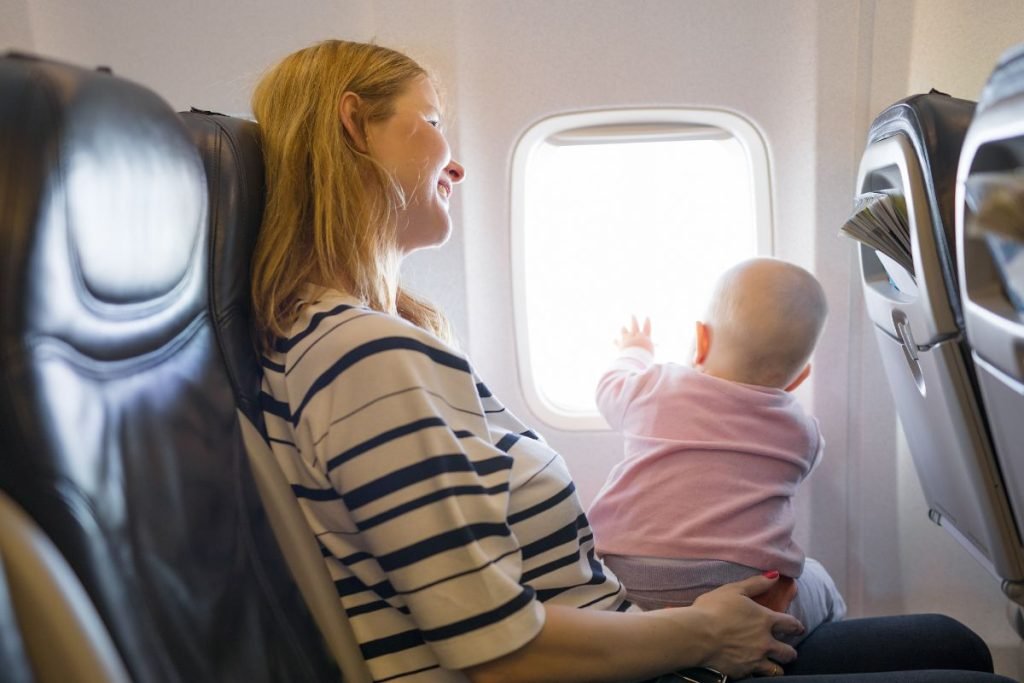
What Do I Do When I Get Home from Traveling with a Baby?
Returning home after a trip requires a thoughtful approach to ease your baby into the routine. Gradually reintroduce familiar sleep cues and bedtime rituals. Unpack your baby’s sleep essentials promptly, ensuring their sleep space mirrors the one they left. A consistent bedtime on the first night back can help reset their internal clock and make the transition smoother.
Maintaining Sleep Routines
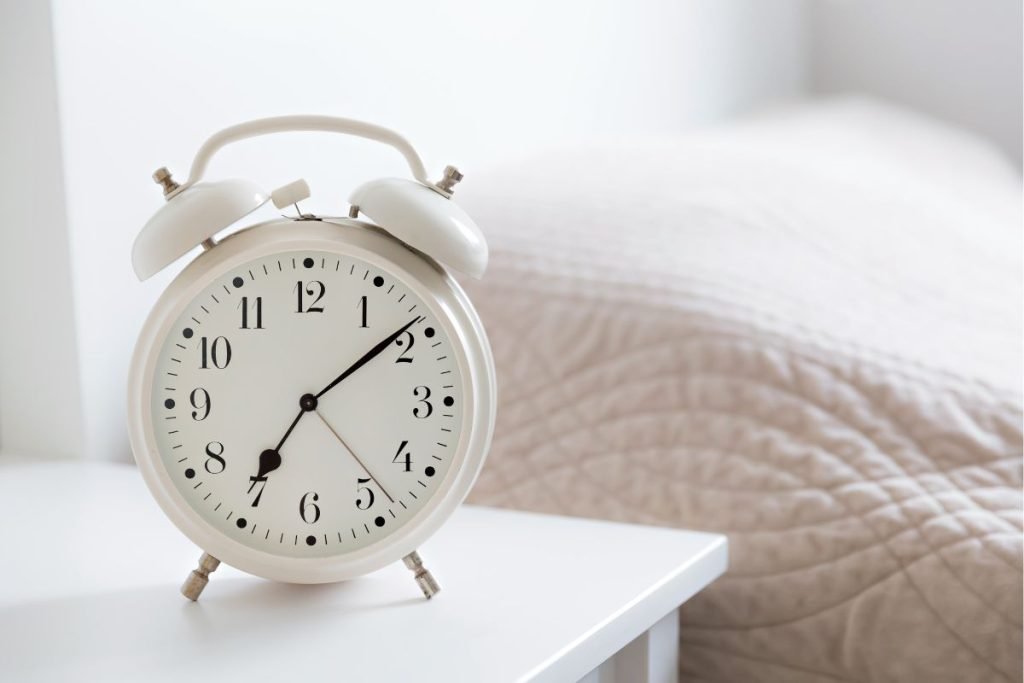
Traveling with Kids? How to Keep Your Sleep Routine on Track
Maintaining sleep routines while on the road with kids is no small feat but with a bit of planning, it’s entirely achievable. Stick to familiar bedtime rituals and sleep cues to signal when it’s time to wind down. Consistency is key whether it’s reading a favorite bedtime story or utilizing a portable sound machine. Creating a sleep-conducive environment, even away from home, ensures a more restful night for both you and your child.
Figuring Out the Right Wake Window Can Be Tricky
Understanding your child’s wake window is crucial for a well-rested traveler. These window, the optimal times between sleep periods, vary with age. When traveling, pay attention to your child’s natural sleep cues and adjust activities accordingly. For example, if your toddler shows signs of tiredness, it might be time for a nap or bedtime. Navigating Wake Window Baby Schedule ensures your child gets the sleep they need, even during the excitement of travel.
How to Manage Your Child’s Sleep Schedule on a Trip
Managing your child’s sleep schedule on a trip involves a delicate balance. Stick to a routine as much as possible, even if it’s adapted to the travel environment. Ensure your child gets quality sleep by creating a sleep-friendly space and sticking to familiar bedtime rituals. Consistency is key to managing sleep schedules while traveling, making the overall experience more enjoyable for both parent and child.
How Do I Help My Baby to Sleep on a Plane?
Air travel with a baby brings its own set of challenges, particularly when it comes to sleep. Create a cozy sleep space on the plane by bringing familiar items, like a soft blanket or a favorite sleep toy. Consider dressing your baby in comfortable sleepwear and maintaining aspects of your bedtime routine. By making the sleep environment familiar, you increase the chances of your baby getting some quality rest during the flight.
5 Ways to Maintain Sleep Routines While Traveling

Bring a Piece of Home with You
Maintaining your child’s sleep routine while traveling becomes more manageable when you bring familiar items. Consider packing your baby’s favorite blanket, stuffed animal, or even a portable white noise machine. These pieces of home create a comforting and recognizable sleep environment, promoting a more restful experience away from home.
Set Up Your Sleep Environment
Optimizing the sleep space during travel is crucial for a good night’s sleep. Arrange the travel crib or sleeping area in a way that mirrors your child’s setup at home. Familiarity in the sleep space helps your child feel secure, making the adjustment to a new environment smoother.
Offer More Comfort
Enhance your child’s sleep experience by providing additional comfort during travel. Whether it’s a cozy sleep sack, a favorite bedtime story, or a small pillow, these touches of comfort can make a significant difference. Familiar comforts from home contribute to a sense of security, aiding in maintaining sleep routines.
Create Boundaries with Family and Friends
Social interactions during travel can sometimes disrupt sleep routines. Communicate your child’s sleep schedule to family and friends, establishing boundaries to protect designated sleep times. Encourage understanding and support from those around you to ensure your child gets the rest they need, even amidst social activities.
Recommit When You Return Home
Returning home marks the perfect opportunity to re-establish your regular sleep routine. Promptly reintroduce familiar sleep cues, bedtime rituals, and the overall sleep environment. Consistency upon returning home helps signal to your child that it’s time to resume their usual sleep patterns.
Holiday Travel Checklist for Maximum Sleep

Managing Time Zone Changes with a Baby
Navigating time zone changes during holiday travel requires careful planning. Adjust your child’s sleep schedule gradually before departure, and expose them to natural daylight at the destination. This helps synchronize their internal clock with the new time zone, reducing the impact of jet lag.
Traveling Between Time Zones With a Baby: West
Traveling to destinations in the Western time zones presents unique challenges. Strategically adjust your child’s sleep schedule to align with the new time zone, and utilize blackout curtains to create a conducive sleep environment.
Traveling Between Time Zones: East
Similarly, when you’re traveling to Eastern time zones, make gradual adjustments to your child’s sleep schedule. Encourage exposure to morning sunlight and maintain consistency in bedtime routines to aid in a smoother transition.
Sleep Aid Strategies – Wake Window Travel Tips
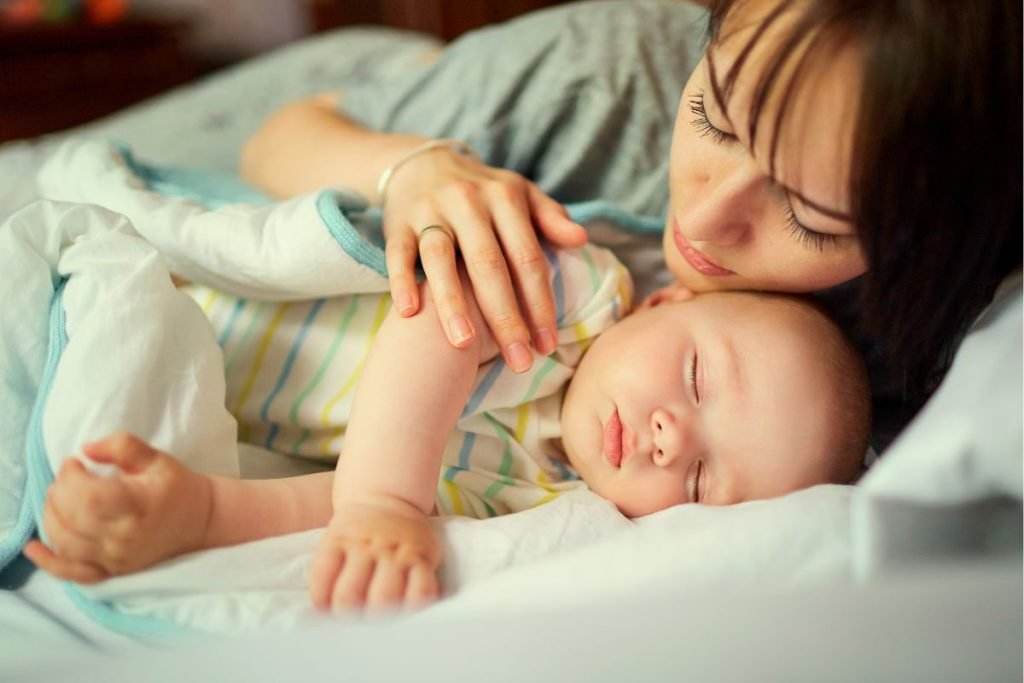
Sleep Space: 5 Tips To Ensure Your Baby Sleeps While Traveling
Ensuring your baby sleeps well during travel involves a thoughtful combination of strategies. Consider using sleep aids like blackout curtains to create a conducive sleep environment. Timing is crucial, so align sleep schedules with your destination’s time zone. Utilize familiar sleep spaces, such as a travel crib, and consider stress management techniques, ensuring a more relaxed bedtime routine. Additionally, discuss the use of melatonin with your pediatrician for tailored advice.
Recap of Baby Sleep When Traveling
Summarizing the key points for successful baby sleep during travel reinforces essential strategies. Maintain a consistent bedtime routine, create a familiar sleep environment, and be mindful of adjusting to new time zones. These recap tips serve as a quick reference for parents on the go, ensuring a restful experience for both baby and family.
Expert Advice and Resources

Baby Sleep When Traveling: A Sleep Consultant Advice
Gain valuable insights from a certified sleep consultant on optimizing your baby’s sleep during travel. Expert advice covers various topics, including adjusting to new environments, managing sleep disruptions, and creating a travel-friendly sleep routine. This advice serves as a trusted resource for parents seeking professional guidance.
Family Travel Tips and Resources
Beyond sleep-specific advice, additional tips to help and resources for family travel are essential. From packing essentials to navigating airport security with children, these practical tips enhance the overall travel experience. Access a wealth of information to make family travel smoother, enjoyable, and, most importantly, well-rested.
Recommended Gear
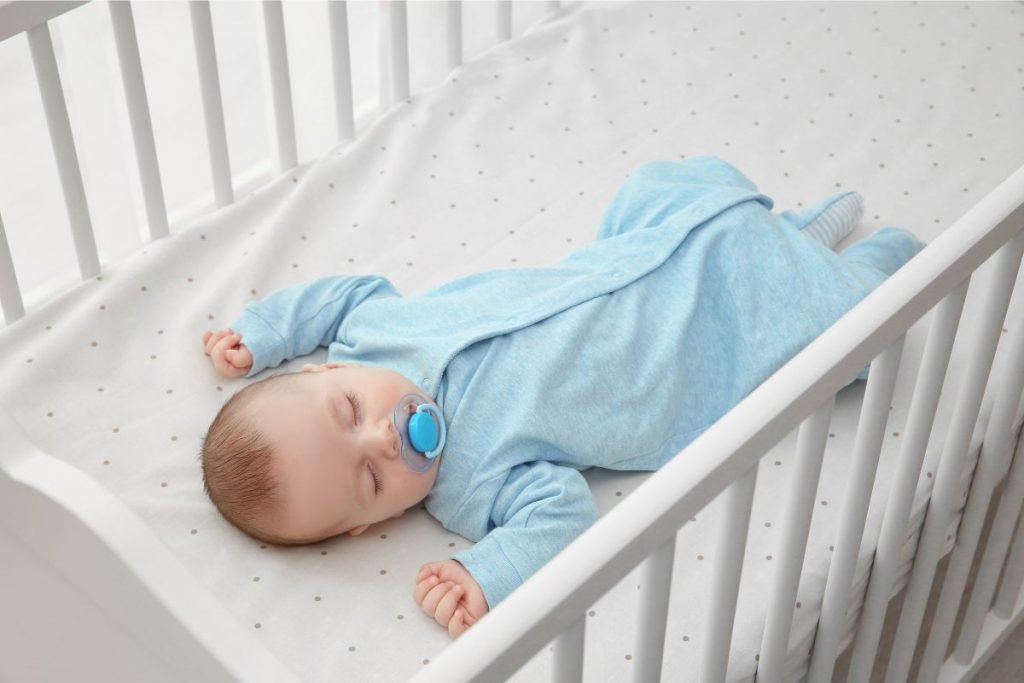
Baby Sleep When Traveling To Hotels
Navigating hotel stays with a baby requires strategic planning. Consider bringing blackout curtains to ensure a dark sleep environment. Familiar sleep aids, such as your baby’s favorite blanket or stuffed animal, contribute to a comforting atmosphere. Check with the hotel in advance to confirm the availability of a crib or pack ‘n-play. These considerations enhance the sleep experience for your baby during hotel stays.
Baby Sleep Tips for Traveling Schedules While Traveling
Managing sleep schedules on the go is crucial for a well-rested baby. Stick to a flexible routine that aligns with your travel plans. Ensure your baby gets adequate naps, and be mindful of bedtime rituals to signal the onset of sleep. Adapting your child’s sleep schedule to the new environment contributes to a smoother travel experience.
Baby Travel Gear
When it comes to essential baby travel gear, a few key items can make a significant difference. Invest in a reliable travel crib or portable bassinet for a familiar sleep space. Consider a lightweight stroller for easy maneuvering, and don’t forget to pack blackout curtains and a portable white noise machine to optimize the sleep environment.
Toddler Travel Gear
Traveling with a toddler brings its own set of considerations. Ensure your toddler has a comfortable sleep space with a suitable travel bed or cot. Bring along your favorite bedtime stories and a familiar blanket for added comfort. A compact, foldable stroller makes transportation more convenient, contributing to a smoother travel experience for both parent and toddler.
Air Travel Tips
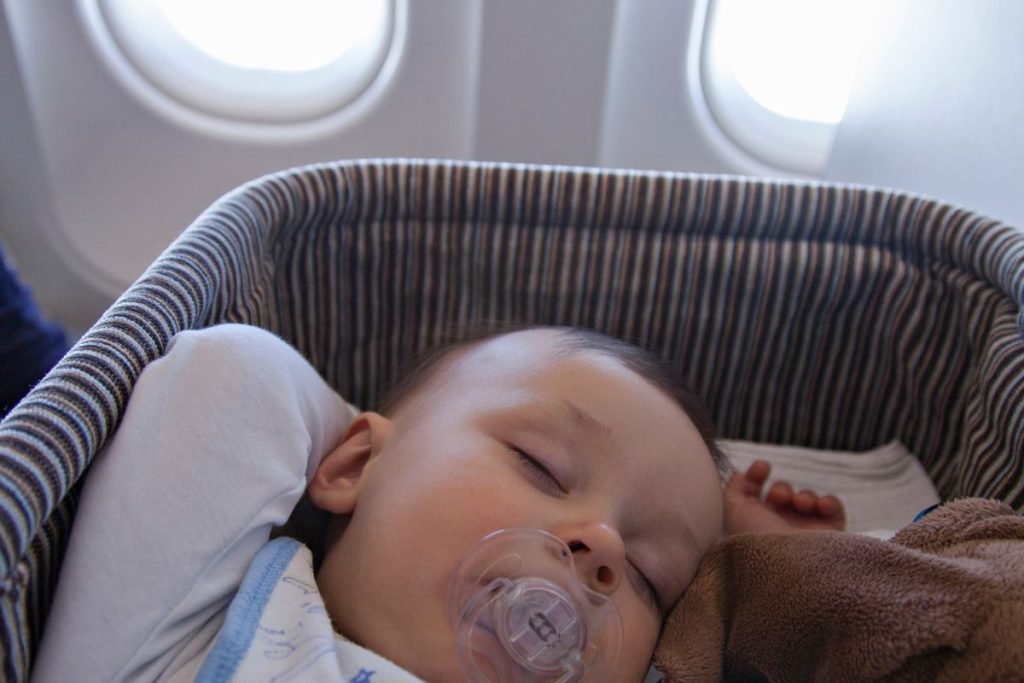
Baby Sleep When Traveling By Plane
Promoting sleep during air travel involves strategic planning. Consider dressing your baby in comfortable sleepwear, and bring along familiar sleep aids for the journey. Opt for a flight that aligns with your baby’s natural sleep patterns when possible. Creating a cozy sleep space on the plane enhances the likelihood of your baby getting some quality rest during the flight.
Other Words of Wisdom
Explore additional advice and insights for successful baby sleep during travel. From adapting to different time zones to managing sleep disruptions, these words of wisdom offer practical solutions for parents on the go. Whether it’s dealing with overtiredness or creating a sleep-conducive environment, these insights contribute to a more enjoyable and well-rested travel experience.
Summary
Traveling with your little one can be a wonderful experience if you have the right strategies in place. “Wake Windows Travel Tips” is an excellent guide that covers everything you need to know for stress-free travel with your baby.
If you’re returning home, it’s important to recommit to your routine and follow the hotel and sleep schedule best tips. Successful baby sleep during travel requires balance and thoughtful planning, so remember to take things slow and steady. Have a safe and comfortable journey!
Frequently Asked Questions
How Can I Help My Baby Sleep While Traveling?
- Stick to your baby’s usual sleep routine as much as possible.
- Create a sleep-friendly environment, such as using blackout shades and white noise.
- Pack a travel crib or bassinet for your baby to sleep in.
- Bring along familiar sleep items, such as a favorite
How Can I Prevent My Baby From Being Overtired While Traveling?
- Watch for signs of tiredness, such as yawning and fussiness.
- Adjust your baby’s wake window to accommodate travel time and new time zones.
- Allow your baby to nap in a stroller or carrier during the day to help them sleep on the go.
- Consider using a pacifier or swaddling to help soothe your baby and promote sleep.
How Long Should My Baby’s Wake Window Be During Travel?
- The length of your baby’s wake window may be shorter during travel due to new environments and disruptions.
- Aim for a wake window of 2-3 hours for younger babies (0-3 months) and 3-4 hours for older babies (4-6 months).
- Be flexible and adjust as needed based on your baby’s behavior and sleep patterns. See our full Wake Windows Age Guide for detailed recommendations by stage.
How Can I Create a Sleep Routine for My Baby While Traveling?
- Stick to your baby’s usual sleep routine as much as possible, including bedtime and nap times.
- Adjust your routine to accommodate travel time and new time zones, if necessary.
- Use white noise or a sound machine to help create a consistent sleep environment.
- Pack familiar sleep items, such as a favorite blanket or stuffed animal, to help soothe your baby.
What Are Some Tips for Getting My Baby to Sleep in a New Place While Traveling?
- Create a sleep-friendly environment, such as using blackout shades and white noise.
- Use familiar sleep items, such as a favorite blanket or stuffed animal, to help soothe your baby.
- Consider using a swaddle or sleep sack to help promote sleep and prevent startle reflexes.
- Try using a pacifier or breastfeeding to help soothe your baby and promote sleep.
- Allow your baby to nap in a stroller or carrier during the day to help them sleep on the go.





